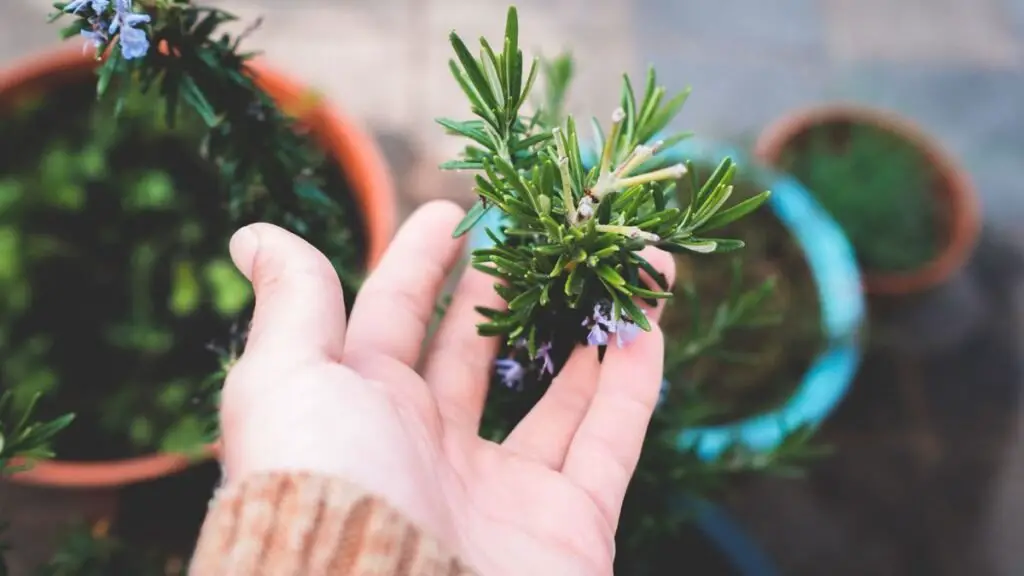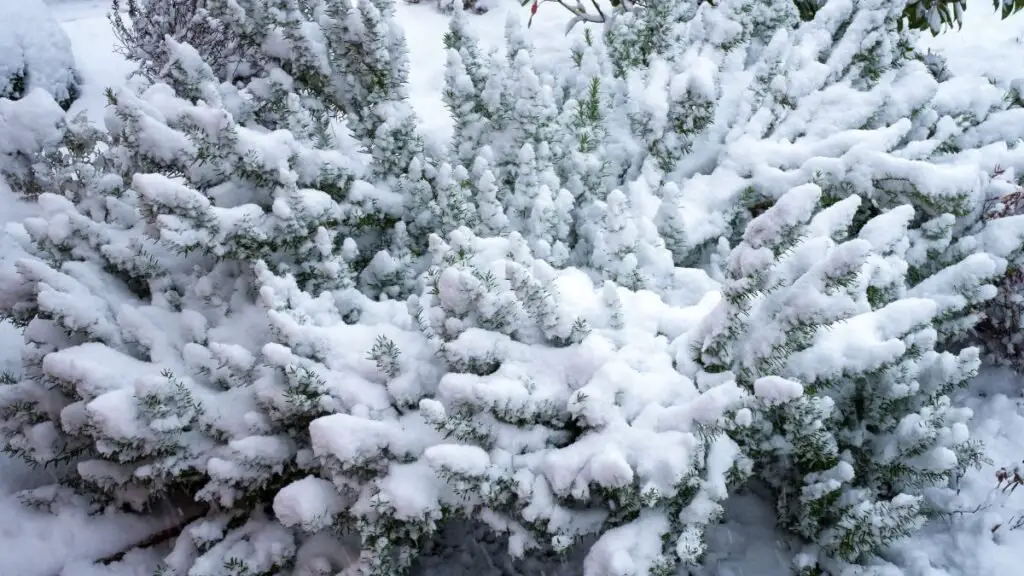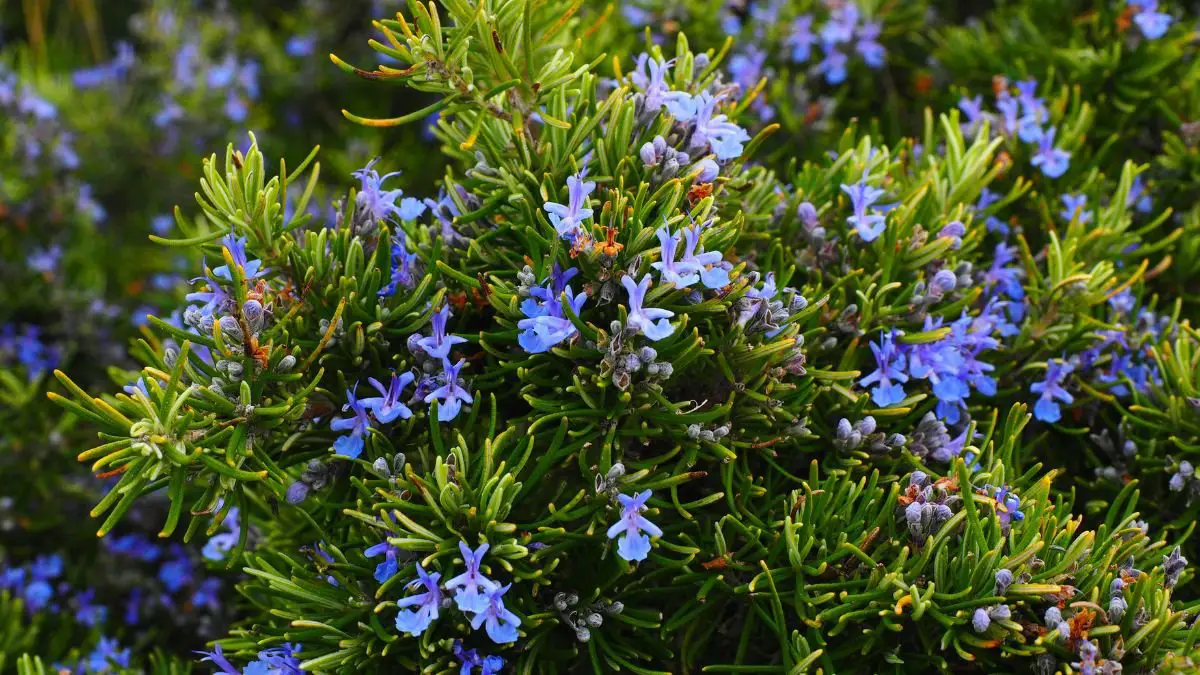Looking to find the perfect spot to plant your rosemary? Rosemary, a fragrant herb native to the Mediterranean region, has been cherished since ancient times for its culinary and medicinal properties. Understanding its historical significance can guide us in selecting the ideal location for this versatile herb in our modern gardens. By considering factors such as sunlight, soil quality, and drainage, you can ensure your rosemary thrives and adds beauty and flavor to your outdoor space.
Key Takeaways
- Choose a sunny spot: Plant your rosemary in a location that receives at least 6-8 hours of sunlight daily for optimal growth.
- Provide well-draining soil: Ensure the planting area has good drainage to prevent waterlogging, which can harm the rosemary plant.
- Consider container gardening: If space is limited or you want more control over soil conditions, grow rosemary in a container with well-draining soil.
- Prune regularly: Trim your rosemary plant to promote bushier growth and prevent it from becoming leggy.
- Shield from frost: Protect your rosemary during winter by covering it with a frost cloth or bringing potted plants indoors when temperatures drop.
- Try propagating from cuttings: Expand your rosemary collection by propagating new plants from stem cuttings in water or soil.
Choosing the Right Location
Sunlight Needs
Place rosemary in a warm, sunny spot to thrive and grow optimally. Make sure it gets 6-8 hours of sunlight daily. Avoid shaded areas to prevent leggy growth.
Soil Type
Select light, free-draining soil when planting rosemary. Opt for sandy or loamy soil with good drainage capacity. Heavy clay soil that retains water should be avoided.
Drainage Essentials
Ensure proper drainage by incorporating sand or perlite into the soil mix for rosemary plants. If natural drainage is inadequate, consider using raised beds. Prevent waterlogging to steer clear of root rot problems.
Preparing the Planting Area
Soil Preparation
Prepare the area for planting by enriching the soil with compost or well-rotted manure. Aim for a slightly alkaline soil pH level between 6.0 and 7.0, which is ideal for rosemary growth. Breaking up compacted soil is crucial to enhance aeration, allowing the roots to thrive.
Spacing Considerations
When planning where to plant your rosemary, ensure proper spacing of at least 18 inches between each plant. Adequate spacing facilitates air circulation around the plants, reducing the risk of diseases. Avoid overcrowding to prevent competition for nutrients among neighboring plants. Take into account the upright growth habit and mature size of rosemary when determining planting distances.
Companion Planting
Consider companion planting rosemary with sage, lavender, thyme, or hyssop to create a harmonious Mediterranean herb garden. These herbs complement each other in terms of growth requirements and benefits. The aromatic properties of rosemary not only enhance the flavor of neighboring plants but also act as a natural pest deterrent. By incorporating diverse plant species in your garden, you promote biodiversity, fostering a healthier ecosystem that attracts beneficial insects and wildlife.
Planting Rosemary in the Garden

Selecting the Spot
When planting rosemary, choose a spot with good air circulation. This helps prevent fungal diseases that can harm the plant. Consider locating it near your kitchen for convenient access to fresh herbs while cooking. Evaluating the microclimate of your garden is crucial to ensure the rosemary thrives in the best possible location.
Ground Planting Tips
To plant rosemary in the ground successfully, dig a hole that is twice as wide as the root ball. This extra space allows the roots to spread out and establish themselves effectively. When placing the plant in the ground, make sure it sits at the same depth as it was in its original container. Mulching around the base of the plant helps retain moisture in the soil and suppresses weed growth.
Growing Rosemary in Containers
Container Selection
- Choose a container that is at least 1 foot wide to ensure enough space for the roots to grow.
- Opt for terracotta or clay pots as they offer good airflow, benefiting the plant's root system.
- Consider containers with drainage holes to prevent water accumulation, which can lead to root rot.
Container Planting Tips
- Fill the container with well-draining potting mix to support healthy root development and prevent waterlogging.
- Adding a layer of gravel at the bottom of the pot can improve drainage and avoid root suffocation.
- Place the container in a sunny location, ensuring your rosemary receives adequate sunlight for optimal growth.
Caring for Your Rosemary Plant
Watering Needs
- Water rosemary sparingly, letting the soil dry out between each watering session.
- Avoid overwatering to prevent issues like root rot and fungal diseases.
- Adjust the watering schedule based on weather conditions and the size of the plant.
Feeding Schedule
- Fertilize your rosemary plant moderately using a balanced fertilizer during the spring season.
- Opt for a slow-release fertilizer to provide nutrients gradually over time.
- Be cautious about excessive fertilization as it can cause nutrient imbalances in the plant.
Pruning and Maintenance
- Annually prune your rosemary to maintain its shape and promote bushier growth.
- Eliminate dead or woody stems periodically to revitalize the plant's health.
- Consistent pruning is essential to prevent leggy growth and ensure overall plant well-being.
Protecting Rosemary in Winter

Winter Care Tips
To safeguard your rosemary plant during the colder months, mulch around its base to insulate the roots. This protective layer helps maintain soil warmth and moisture, crucial for the plant's survival. Shielding the plant from harsh winds is essential as strong gusts can lead to desiccation, drying out the foliage. In regions with extreme cold spells, it's advisable to bring potted rosemary indoors to shield it from freezing temperatures.
In regions where winters are particularly harsh, providing extra care for your rosemary plant becomes crucial. Mulching serves as a protective barrier against the cold by retaining heat and moisture in the soil, ensuring the roots stay healthy. Harsh winds can strip away moisture from the plant's leaves, causing them to dry out and potentially harm the overall health of the rosemary. Bringing potted plants indoors during severe cold snaps offers added protection against frost damage and ensures their well-being.
- Mulch around the base
- Shield from harsh winds
- Consider bringing potted plants indoors
Propagating Rosemary
Cutting Techniques
Using sharp, clean shears is crucial for precise cuts when harvesting rosemary. Cut the stems just above a leaf node to stimulate new growth. Harvesting in moderation is essential to maintain the plant's vitality and longevity.
Planting Cuttings
To propagate rosemary from cuttings, choose healthy, non-flowering stems. Before planting in well-draining soil, dip the cut end in rooting hormone. Ensure the cuttings remain moist and warm to facilitate root development.
Harvesting Rosemary
Best Practices
Regularly monitor your rosemary plant for pests or diseases to maintain its health and vitality. Rotate the planting locations of your rosemary to prevent soil exhaustion and the buildup of diseases. Keep yourself updated on the regional growing conditions to adjust care practices accordingly.
Usage Ideas
- Enhance your culinary creations by incorporating fresh rosemary leaves for a burst of flavor.
- Get creative by making fragrant sachets or potpourri using dried rosemary leaves.
- Experiment with homemade skincare products by infusing rosemary in oils or vinegars.
Troubleshooting Common Issues
Pest Management
To tackle pest issues, control aphids and spider mites by spraying them with a strong jet of water. Introduce beneficial insects such as ladybugs to naturally combat pest infestations. For persistent pests, utilize neem oil or insecticidal soap as organic remedies.
Disease Prevention
Prevent fungal diseases by avoiding overhead watering, which can create a damp environment ideal for disease development. Ensure proper spacing between plants to enhance air circulation, reducing the risk of fungal infections. Promptly remove and destroy any infected plant material to prevent diseases from spreading.
Final Remarks
You've learned the ins and outs of planting, growing, and caring for your rosemary plant. By following these steps, you'll be on your way to enjoying a thriving herb garden or a lush container of fragrant rosemary. Remember to provide the right conditions, give it proper care, and watch your rosemary flourish.
Now it's time to get your hands dirty and put all this knowledge into practice. Head out to your garden or balcony, pick the perfect spot, and start growing your own rosemary plant. With dedication and attention to detail, you'll soon be harvesting fresh rosemary for your culinary creations. Happy gardening!
Frequently Asked Questions
How do I choose the right location to plant a rosemary plant?
To choose the right location for your rosemary plant, ensure it gets at least 6-8 hours of sunlight daily, well-draining soil, and protection from strong winds. Avoid areas with high humidity to prevent root rot.
How should I prepare the planting area for my rosemary plant?
Prepare the planting area by amending the soil with sand or gravel to improve drainage. Ensure the pH level is around 6.0-7.0. Remove any weeds or debris and loosen the soil before planting your rosemary.
Can I grow rosemary in containers?
Yes, you can grow rosemary in containers. Choose a pot with good drainage holes, use well-draining soil, and place it in a sunny spot. Water when the top inch of soil is dry and fertilize sparingly during the growing season.
How do I care for my rosemary plant?
Care for your rosemary plant by watering it moderately, allowing the soil to dry out between waterings. Prune regularly to maintain its shape and promote growth. Fertilize lightly in spring and provide winter protection in colder climates.
When and how should I harvest rosemary?
Harvest rosemary sprigs in the morning when its flavor is most intense. Use sharp scissors or shears to cut stems as needed, avoiding cutting into woody parts excessively. Regular harvesting promotes bushier growth and keeps the plant healthy.
Image Source: Paid image from CANVA



